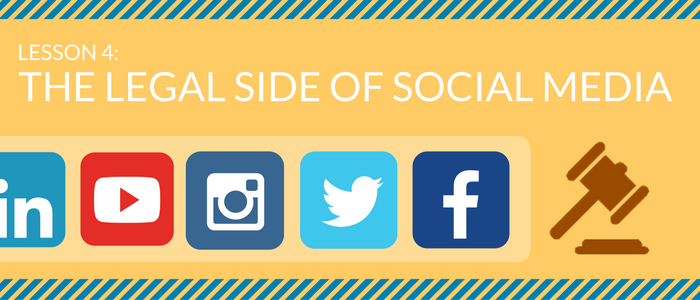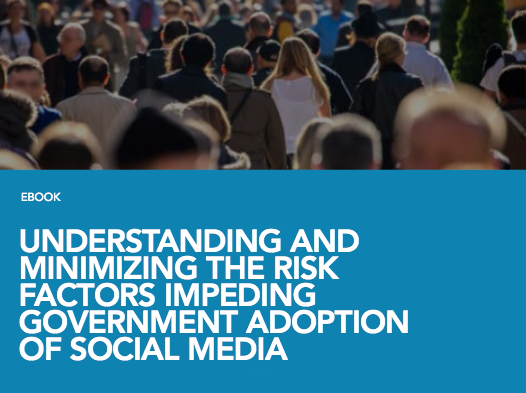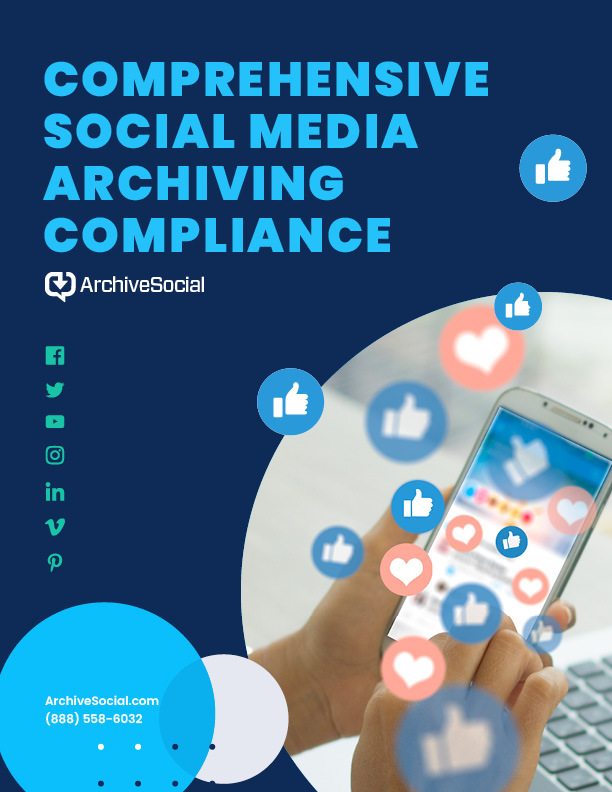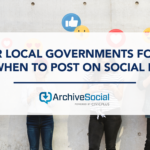Welcome to day four of the Social Media Crash Course for Government Communicators!
So far, you’ve learned how to create a social media policy, manage inappropriate comments, and deal with crisis situations. Today, we’ll focus on the legal aspects of government social media.
One of the major benefits of social media is that it creates an ongoing conversation between the public and the government. However, as social media increases transparency and communication between government officials and citizens, it also introduces new risks.
The interactive nature of social media can be a potential minefield of legal issues particularly where comments and free speech are involved. As the law around social media is yet underdeveloped, the public sector should proceed with caution.
Additionally, public records laws are applicable to government agency communications across social media. Federal agencies in the United States must retain records of social media in accordance with the Freedom of Information Act (FOIA), while state and local governments must comply with similar state-specific records laws.
Despite the potential risks, many government communicators are not taking basic precautions to protect their agencies. In a survey conducted by the Center for Digital Government, only half of the government agencies using social media had the necessary policies in place to minimize legal risk.
In this blog, we’ll examine some of the risks you’re most likely to encounter, as well as offer best practices for how you can protect your agency on social media.
Legal Risks of Social Media
While public sector communicators should have a clear understanding of the specific types of risk their organization might face, the most common social media problems apply across all levels of government. In this section, we explore the three most prominent risks governments face while engaging on social media.
Risk #1: Liability resulting from third-party content
Government social media works best when citizens are engaged in the conversation and feel heard. For the most part, these interactions are positive and productive. Unfortunately, as we covered in lesson two, keeping the conversation two-way makes it possible for commenters to share offensive, defamatory, or otherwise undesirable content.
To combat this, some government agencies approach social media with a strategy of one-way communication (what we like to call “anti-social social”). If this is your plan, you might as well stick to press releases and posting information on your website, as you aren’t going to gain much additional value from going social. Treating social media like just another public notice board significantly diminishes its value. Also, since there is no way to completely turn off comments and incoming messages from citizens, one-way social media is neither practical or possible.
Risk #2: FOIA requests and public records compliance
It’s important to remember that social media and public records laws are not in conflict because both serve to further the mission of government transparency. Social media provides an open forum for government communications, and records laws ensure that the information is retained and made available for future needs.

All 50 states have statutes that ensure public access to government records. You can view our map to learn how state public records laws apply to your social media.
Risk #3: No centralized control of the message
On social media, all employees have the ability to represent their organization. However, this distribution of power comes with a lack of control over a centralized brand message. Employees who are not trained in communications can expose your agency to messaging that is inconsistent with the organization’s voice.
Public affairs officials must continue to play a central role even if social media provides a voice to others in the organization. The key to preventing loss of control and minimizing risk is to develop policies to ensure that employees feel empowered but are informed of the potential liabilities of social media.
To learn more about these risks and the laws that affect government social media usage, read our guide on “Understanding and Minimizing the Risk Factors Impeding Government Adoption of Social Media.”
Reducing Your Risk
Now that you’re aware of the risks, how do you make sure you’re prepared to handle them? Here are a few recommendations for mitigating these risks, based on suggestions from Julie Tappendorf—a leading attorney for social media issues in the public sector.
Collaboration
To truly reduce your social media risk, you need to make sure that everyone in your agency is on the same page. Specifically, you’ll need buy-in from several different teams within your organization to ensure successful implementation of social media policy: Communications, Legal, and IT.
Communications teams are intimately familiar with the nature of social media, but may need to be educated in regards to legal imperatives such as records retention. IT departments are often responsible for evaluating technology solutions, but must understand the legal implications and the reasons for implementing solutions proactively. By educating staff on public records requirements, legal teams are able to make sure they abide by these rules and ethically use social media.
Policy
We’ve said it before, and we’ll say it again: the first line of defense against risk is to have a solid social media policy. If you put lesson one of this crash course into action, you’ve already significantly reduced your risk.
An internal social media policy clearly establishes guidelines and boundaries for employees. This policy is the secret weapon to empower employees across the organization to convey information that supports your mission without the need for someone higher up to approve every post. A heavy-handed approval process can quickly dampen internal enthusiasm for social media, and cause pages to stagnate.
Similarly, an external policy alerts citizens that their communications are being retained and could be shared with others, even if moderated or later deleted. If written correctly, an external policy allows you to safely moderate and remove content based on its criteria, as well as explicitly distance your organization from the nature of the content shared by commenters.
For more detail on how a policy impacts your public records requirements and other legal considerations for going social, download our “Legal Guide to Social Media”. This guide also includes a checklist to help you manage the process of implementing the necessary policy and technology to protect your agency. It is written with city and county attorneys in mind, so make sure to share it with your own legal counsel.
Archiving
Lastly, to mitigate risk you should definitely archive your social media activity. Record keeping helps you avoid lawsuits and fines resulting from noncompliance with public records laws. It also ensures that valuable information is available when needed for potential scenarios such as litigation or internal investigations. Additionally, social media archiving establishes transparency and accountability, which helps build trust within the organization and with the general public.
No matter the state of social media use in your agency, you should be aware of the legal risks that you could encounter. Keep these issues in mind while communicating on social media, and you’ll likely save yourself from some major trouble down the road.
Up Next
We’ve reached the end of today’s lesson, but don’t panic! We’ll be back tomorrow with tips for keeping your cool when two stressful situations arise — going viral and making mistakes on social media. You won’t want to miss this one!
Want more government social media knowledge right now? Check out all of our free resources for public agencies. And if you’re curious about ArchiveSocial’s social media archiving platform, start your free trial today.
We’d also like to invite you to contribute to the growing body of knowledge for government communicators by joining our new Facebook group: #GovClub. We created this space for public agency employees to discuss tips and strategies for communicating on social media. We can’t wait to see you there!









